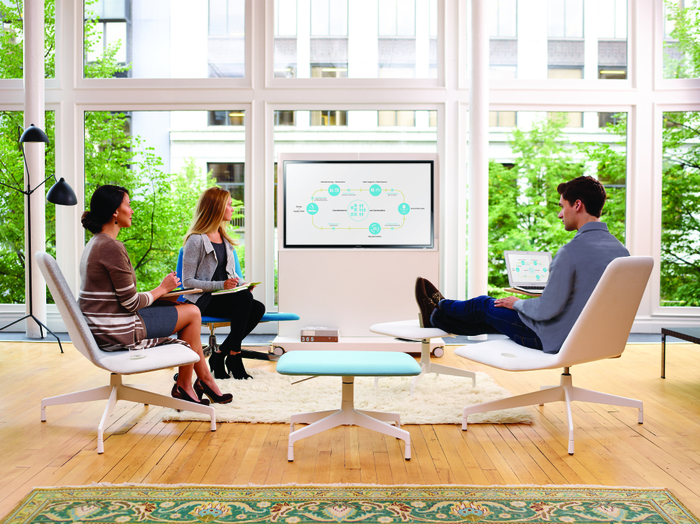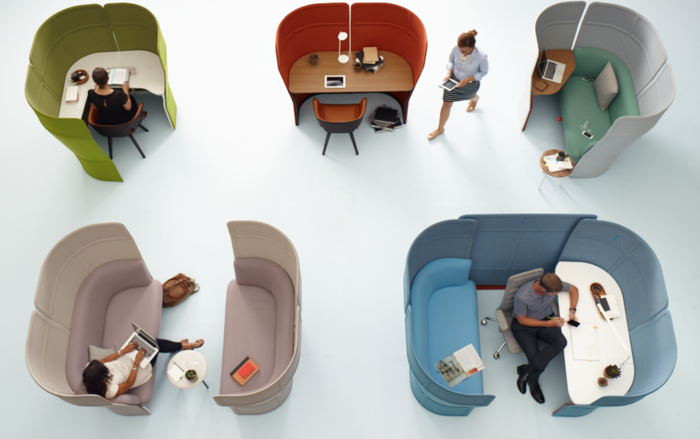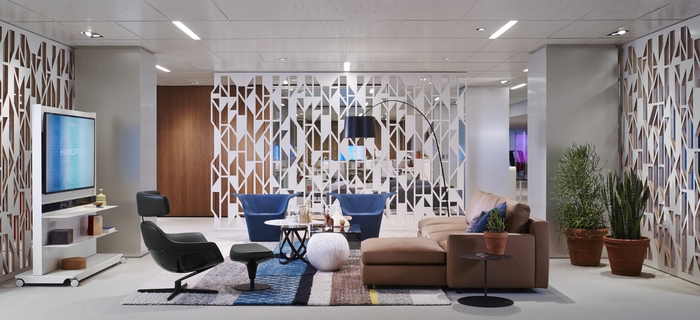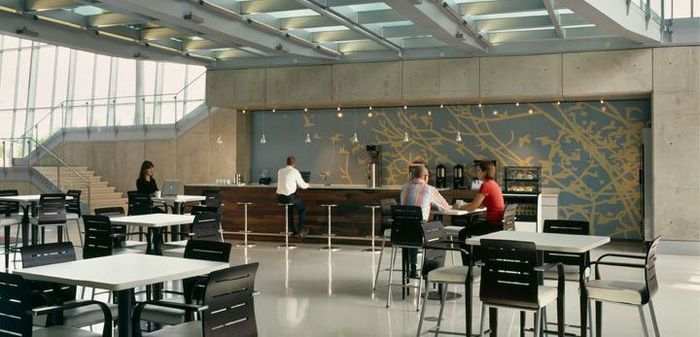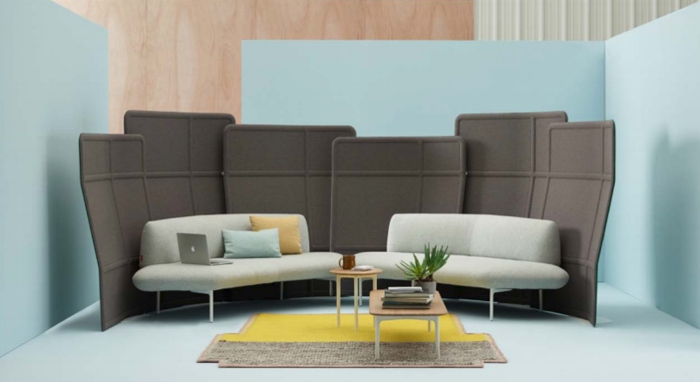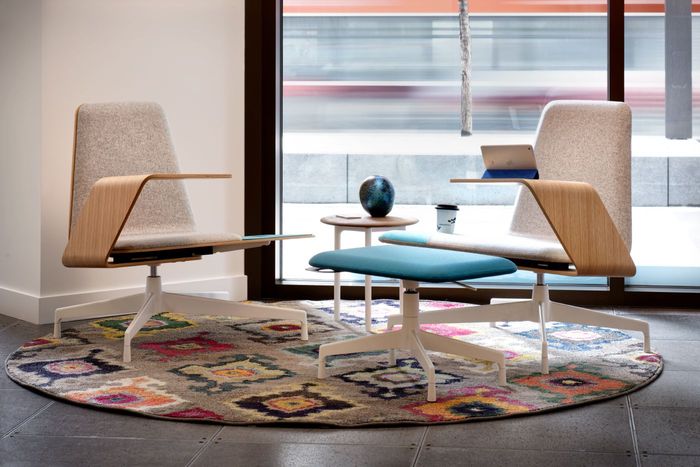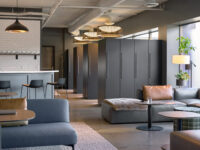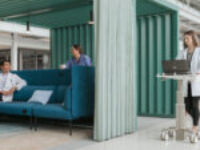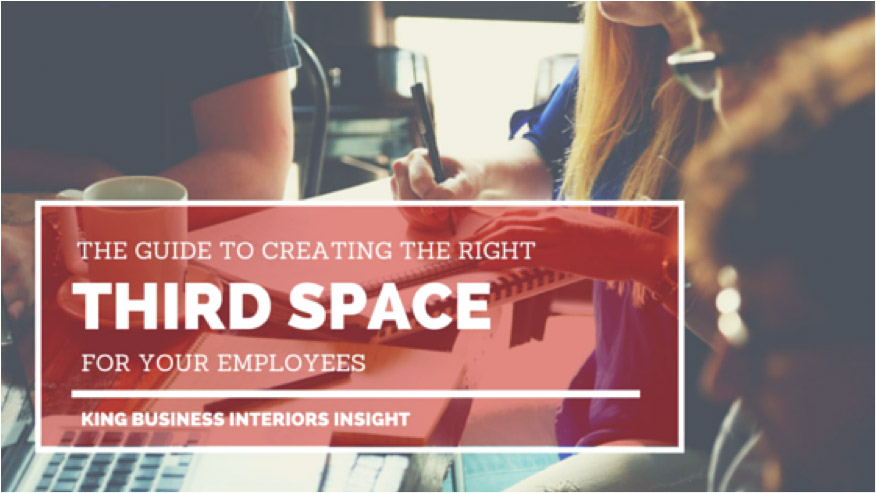
Today, a lot of companies are going to a more open work environment with reduced square footage for the workstation.
There is substantial research to show open offices can increase productivity & collaboration for employees. However, many businesses wonder about minimizing distractions or getting the most use out of their open space. To help the success of this concept, the idea of a third space was created.
The first place is a personal workspace such as a workstation or private office. The “second space” is usually a large meeting space like a conference room or training center. The “third space” is an unassigned destination that allows employees to escape the monotony of a desk, collaborate on the fly, and benefit from a change of scenery when burning through the task list. Technology is a driver in how we work and with continuous improvements we are no longer wired to a desk.
The result that a third space brings your business? An increase in creativity and productivity.
But all third spaces are not created equal. It should embrace your culture and be based on the needs of you and your employees who will use the space day in and day out. Here are some ways to create the perfect third space for your employees:
What Type of Third Space Do You Need?
A collaborative third space allows employees to work together. It offers flat spaces for meetings, areas for laptops and paperwork. The space should let them physically group together to work on a common task or simply engage in a group conversation.
Productive third spaces can be very effective in offering a space to make a phone call or to complete heads down work, away from distractions. This space could include smaller unassigned desks designed for a specific task or lounge chairs with a tablet arm, ideal for laptops or tablets. These spaces could be open, or enclosed for additional privacy.
An entertainment third space allows for room to rest and reset. Your team needs a place to get their minds moving again. Try adding a ping-pong table, café bar, or social space– ways for them to gather and bond. Google even installed a fully equipped performance stage to rock out when you hit the 3 O’clock slump!
Determine the Best Layout
Now that you know what type of space you’ll need, think about the actual layout of the space. The layout helps you achieve the function you need out of the space.
For example, if you need a collaborative third space, you will want lots of mobile chairs and tables that can be pulled together for different size meetings. If you want a productive space, you’ll want to think about comfortable seating, privacy, and lighting. If you are looking for a team-building third space, you may design your space around a ping-pong table or a big-screen TV.
Additionally, you’ll need to think about where your third space will be located in your office. Should it be a central point in the office, easily accessible by everyone? Will the space generate lots of noise? Should it be somewhat closed off in a quiet corner or in its own room entirely? Keep in mind that driving employees to get up and reach different destinations throughout the day is healthy movement mentally and physically!
Design Your Desired Environment
The third space should be an extension of your office culture. Based on the needs of your employees, you can engineer the feel of the third space with the right type of design and furnishings:
Think outside the box. Remember, the objective is to give your employees a change of pace and scenery. Don’t just put a conference table in a room. Think about adding window seats or exercise balls to replace traditional seating. Utilize multiple table heights from coffee tables to standing height tables for different interactions. Add some energetic colors & finishes to draw attention and interest.
Make it comfortable. Regardless of the type of space you need, comfort should be of the utmost importance. Consider the lighting that will be used in your space. Do you want lots of natural light? Do you want trendy fixtures providing ambient light? Ask your team for their input.
Make it adaptable. The best third spaces have lots of potential. While you’ll set the space initially, make sure that the furniture is easily moveable so the space can be utilized for a variety of purposes by your team.
Add The Tools To Help Them Work (or Relax)
For spaces focused on creative brainstorming or personal productivity consider tools such as:
- Mobile white boards
- Interactive smart boards
- Ergonomic tools for laptops & tablets
- Charging ports
If the purpose is more for entertainment or celebration, add some drink station or fun games to the mix. Maybe a small basketball hoop, or a dartboard. Inspire creativity!
Ask For Your Team’s Opinion
The third space is going to be your employees’ space. Before you plan anything, invite their input! Ask them what is lacking in their workspaces. Do they feel like they have a place to relax? Are they always in need of room to collaborate? By polling them first, you can ensure the room feels like a personal extension of them.
Enjoy The Benefits
Implementing a third space can be a big change, make sure to have your management team on board and be the drivers of the change. Use the space and model how it can be used by all. You will soon see your employees enjoying and engaging in new ways! Now that you know the basics of designing a third space, are you ready to make it a reality? Contact us!
